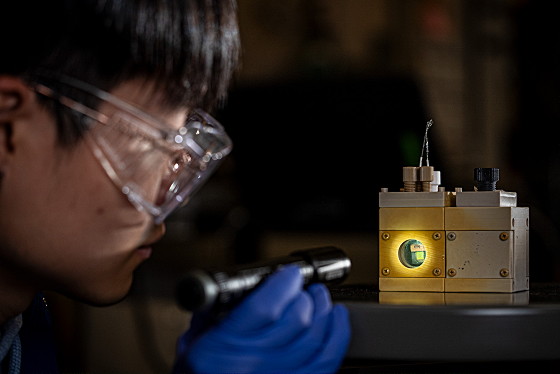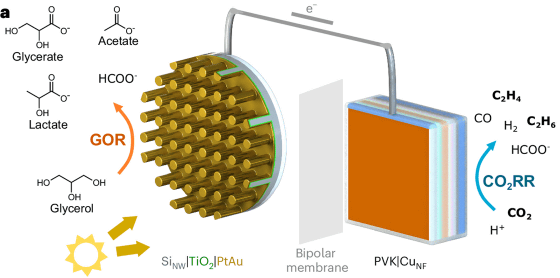'Panels that mimic photosynthesis to produce hydrocarbons from carbon dioxide' are developed, reproducing photosynthesis with inorganic materials

A research team at the Lawrence Berkeley National Laboratory in the United States has developed a panel that produces hydrocarbons from carbon dioxide. The panel's main feature is that it successfully mimics photosynthesis using inorganic materials rather than plant materials, and it is expected that it will be useful for producing plastics and fuels.
Perovskite-driven solar C2 hydrocarbon synthesis from CO2 | Nature Catalysis
https://www.nature.com/articles/s41929-025-01292-y
Scientists Develop Artificial Leaf That Produces Valuable Materials – Berkeley Lab News Center
https://newscenter.lbl.gov/2025/04/24/scientists-develop-artificial-leaf-that-uses-sunlight-to-produce-valuable-chemicals/
The US Department of Energy is promoting a large-scale research project called the Liquid Sunlight Alliance (LiSA) to convert atmospheric substances into chemical energy using sunlight. As part of this project, a panel that produces hydrocarbons from carbon dioxide was developed.
Here's what the panel looks like: When exposed to light, it creates hydrocarbons from carbon dioxide in the air.

The panel is designed to mimic plant photosynthesis and is divided into a photoanode chamber, which is responsible for organic oxidation reactions, and a photocathode chamber, which synthesizes hydrocarbons.

Previously, panels that mimicked photosynthesis to produce hydrocarbons from carbon dioxide had been developed, but these used biological materials. The panels developed this time use inorganic copper, making them more durable, stable, and long-lasting than systems using biological materials.

The research team is continuing their research with the aim of expanding the area of the panels, and in the future aims to produce plastics, fuels, etc. from the hydrocarbons synthesized by the panels.
Related Posts:
in Science, Posted by log1o_hf







